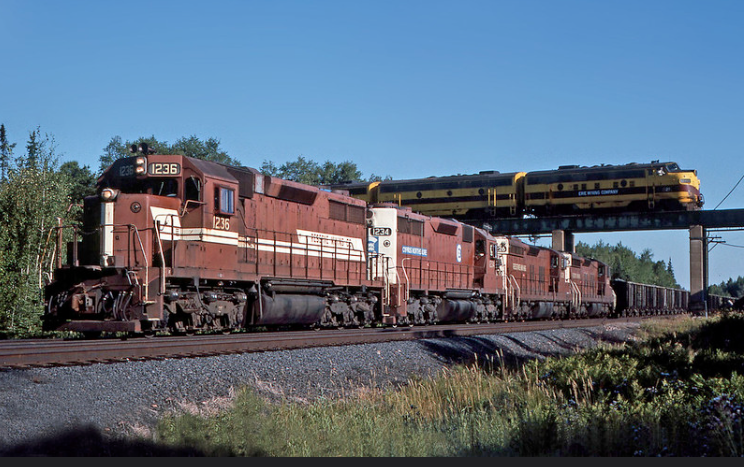Photo Exhibits |
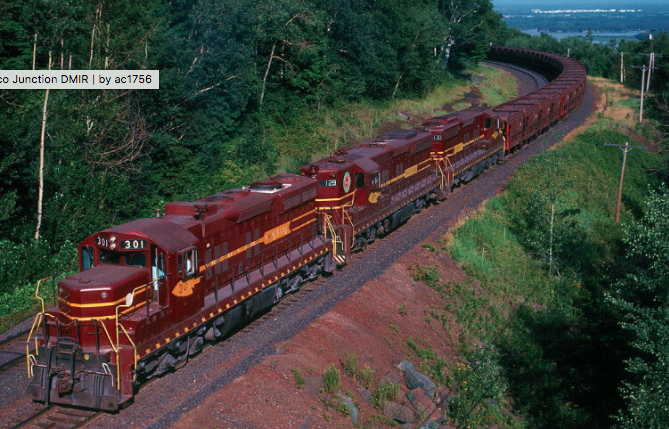
Duluth Missabe & Iron Range SD-M #301, along with SD9s 129 & 130 lead a train of ore jennies
south through Proctor, Minnesota in July 1988. The #301 was rebuilt from SD9 #174 in 1979;
the locomotive received new power assemblies, upgraded electrical equipment, a low-profile
nose, and 26L brakes. (Chuck Schwesinger photo)
| 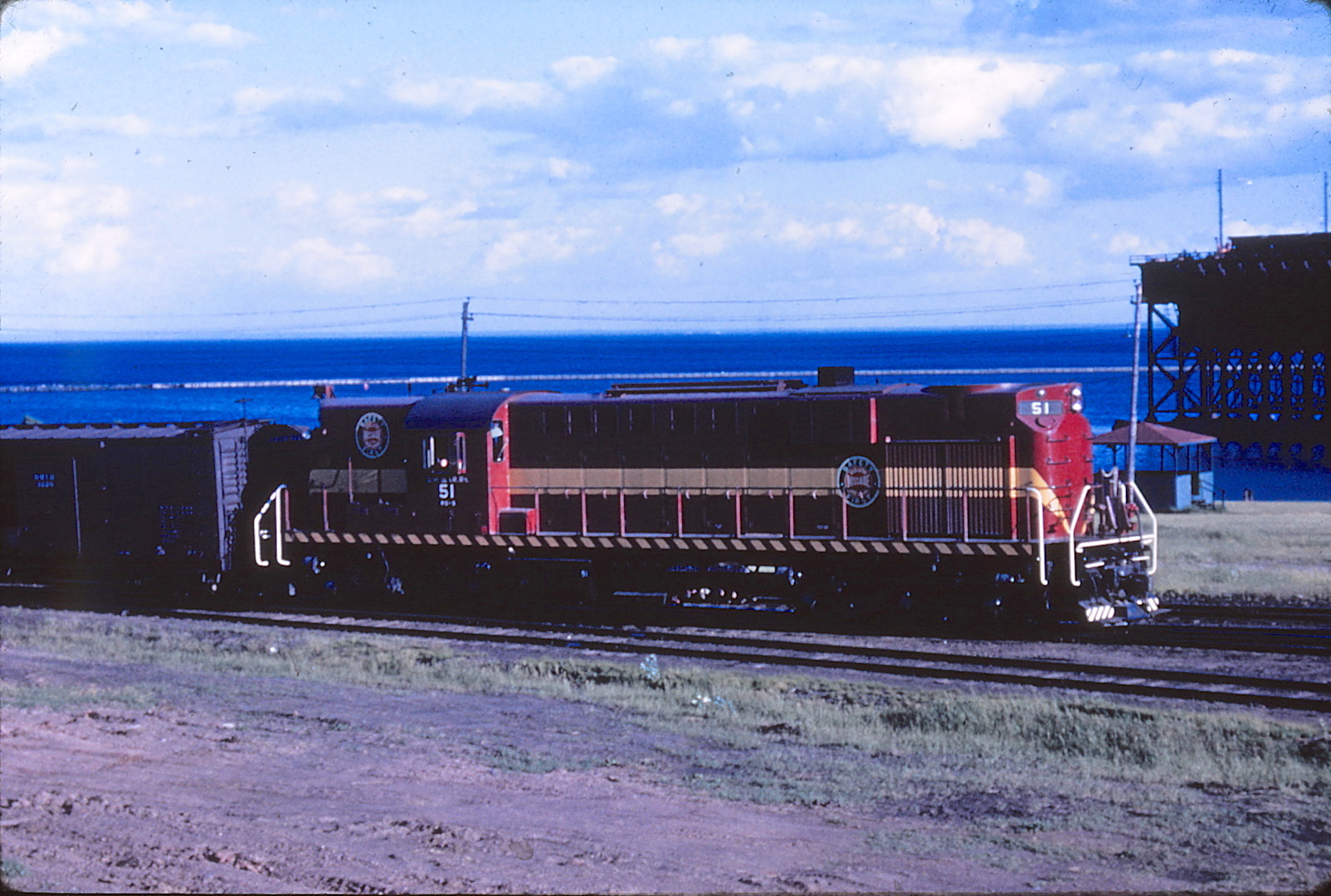
DM&IR's six big Alco RSD15s (#50-55) were an oddity on the all-EMD railroad. Rated at 24,000-hp,
the C-C trucked locomotives were the most powerful units on the northern iron ore-hauling
railroad during the late 1950s and early 1960s; they were sold to the Bessemer & Lake Erie.
(RR "Dick" Wallin collection)
|
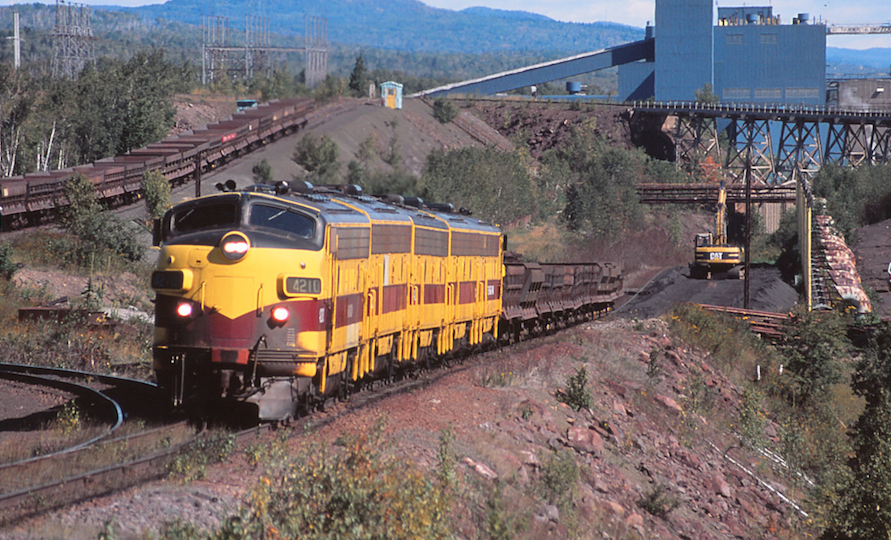
The Erie Mining locomotive roster was perhaps one of the most interesting of all the the
western Lake Superior railroads. In addition to several very photogenic F9s, the company used
three different Alco models in road and transfer service, while most yard duties fell to an
aging fleet of Baldwin switchers. A classic set of F9s work Taconite Harbor, MN. (Randy Allard
photo, 17 September 2008)
| 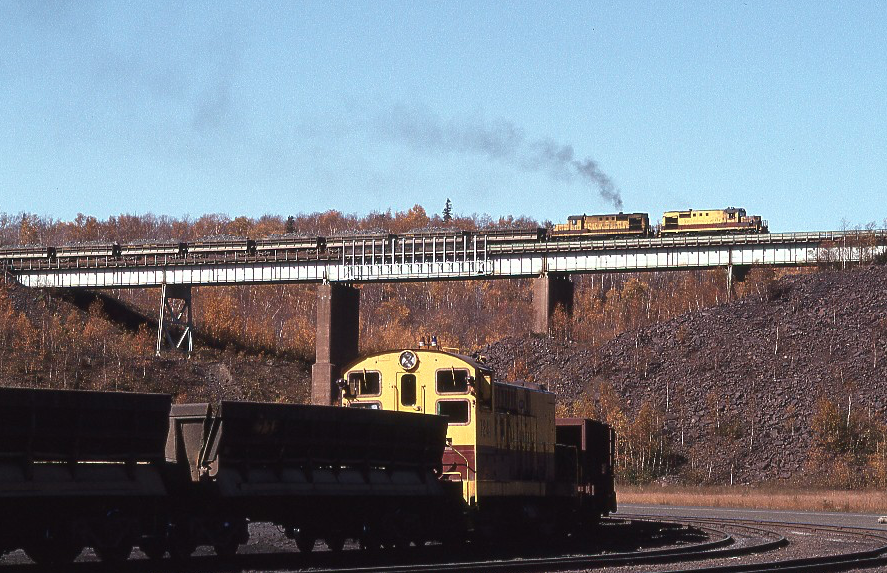
Erie Mining S12 #7241, which was built in 1953, works the sorting yard at Hinsdale, Minnesota,
while two RS11's with home-made chop-noses deliver taconite. Erie Mining owned nine of the
Baldwin S12s; a few were acquired new, the others came from the second-hand market. The
last S12 was retired in 1989. (Rod Miller photo)
|
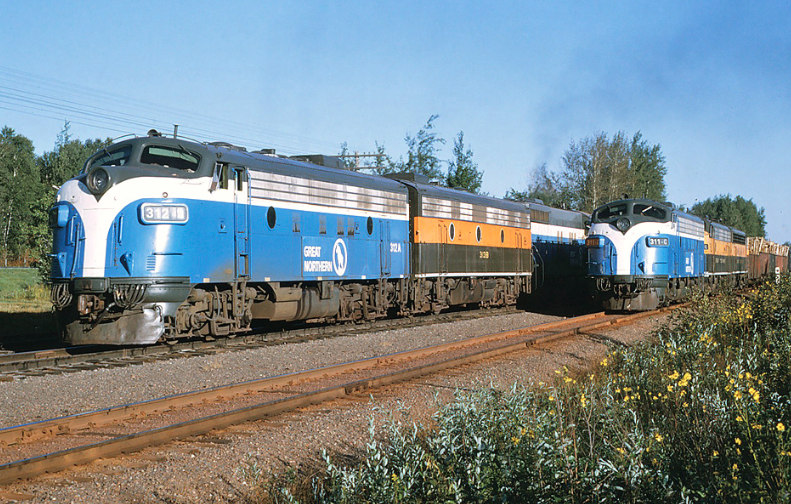
By August 1969, Great Northern's new "Big Sky Blue" corporate attire had spread to many parts
of the system. F7A #312A, in the company of a F7B and GP9, roll through Floodwood, Minnesota
with a Duluth-bound ore train. (Doug Winfield photo)
| 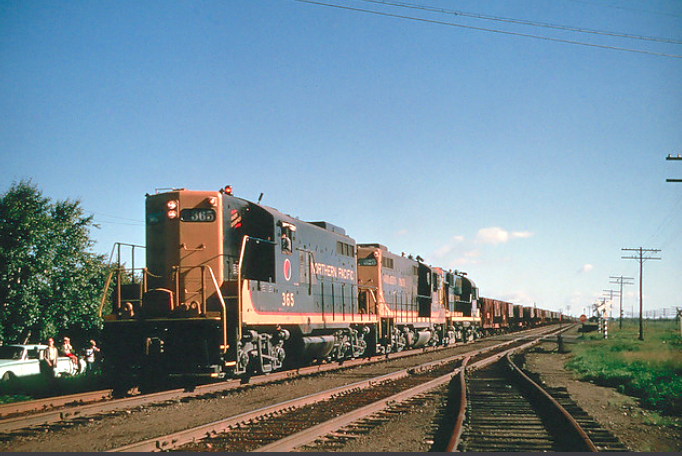
Great Northern, Soo Line and Northern Pacific all relied on four-axle power to move ore
from mines to Lake Superior docks. NP GP9 #365 and other four-axle units lead a train of
empty ore cars west towards Cuyuna Range. (Photographer unknown, Dave
Schauer collection)
|
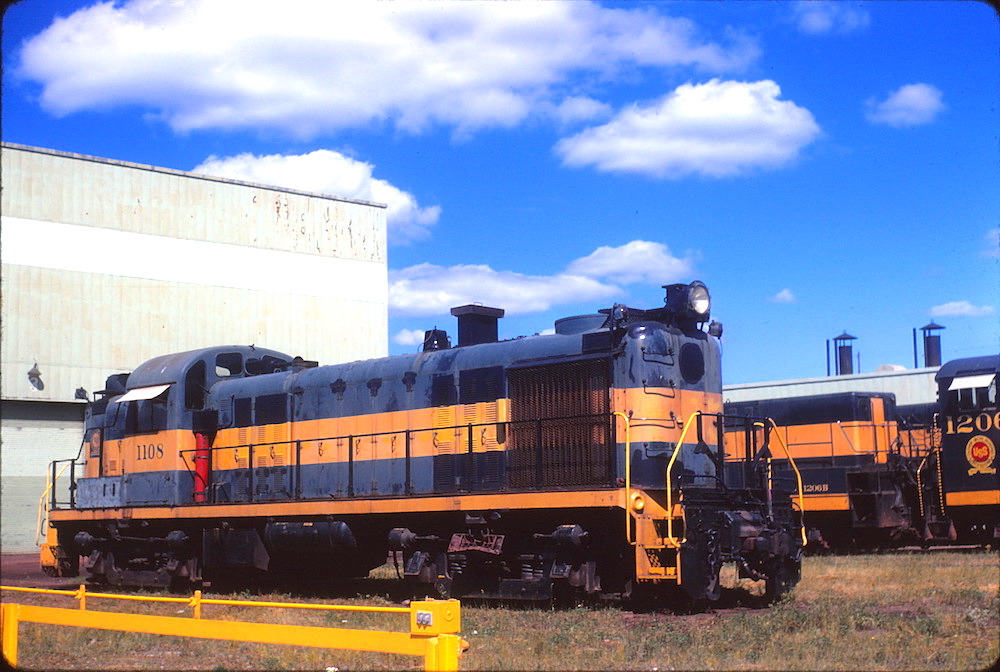
Generally speaking the Upper Midwest ore hauling railroads relied on the catalogs of all
locomotive builders from which to meet their diesel locomotive needs; i.e. Oliver Iron Mining
employed models from all of the major builders except Fairbanks-Morse. From the Alco catalog
OIM chose eleven RS2/RS3s road units, including #1106 pictured here outside the maintenance
shop at Virginia, MN in August 1971. (Paul Hunnell photo, R. Craig collection)
| 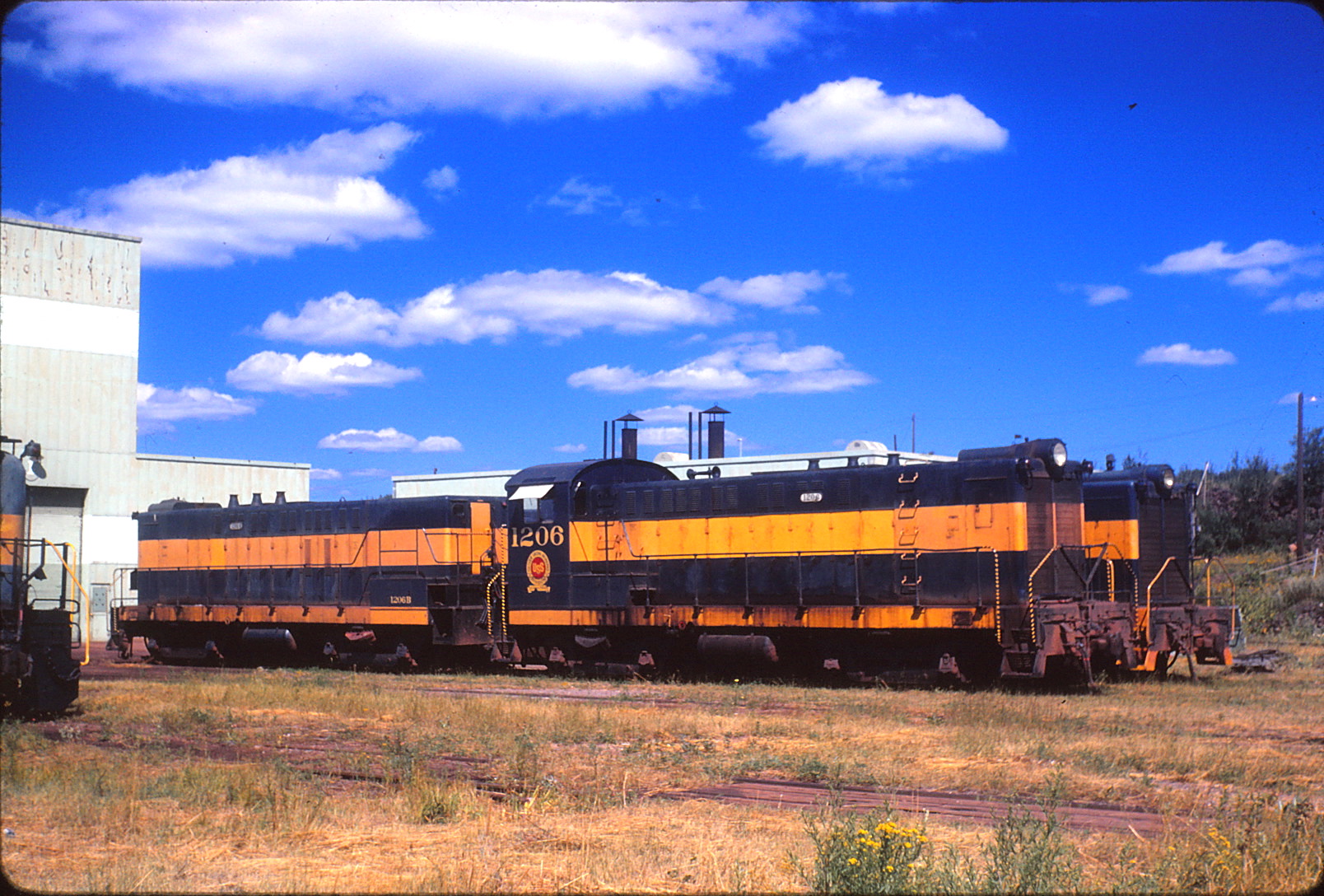
Oliver Iron Mining operated the largest stable of Baldwin-built switchers in the Upper Midwest.
In addition, it was the only railroad to ever purchase cow and calf (cab-less) sets from
Baldwin. The nine S8A & S8B sets carried road numbers #1200A/B to 1206A/B, along with
1214A/B and 1215A/B. The 1206A/B set are seen here in August 1971 outside the shops at
Virginia, MN. (Paul Hunnell photo, R. Craig collection)
|
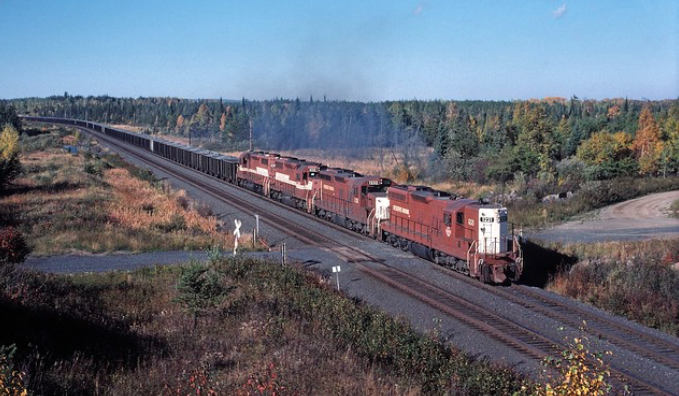
A Reserve Mining taconite train departs Babbitt, Minnesota with an SD9 (#1221), SD18 and two
SD28s. It is a one-of-a-kind locomotive lash-up that can be duplicated only in this region
of North American. (Steve Glischinski photo, September 29, 1979)
| 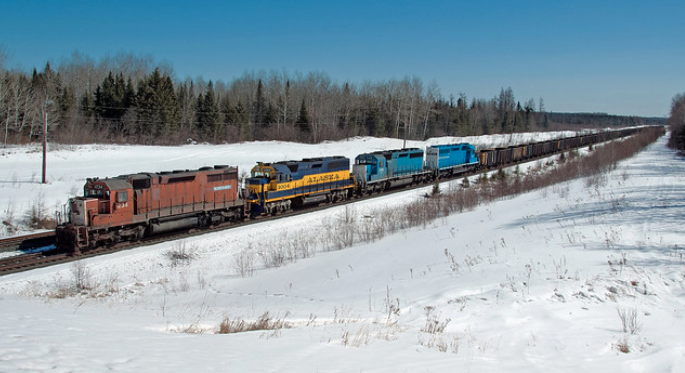
After several strong years in the 1960s and 70s, drastic financial changes by 1986, forced
Reserve Mining Railroad to cease operations. It was eventually replaced by Northshore Mining.
This 2008 Dave Schauer photo shows a mixed consist of ex-Reserve and leased power.
|
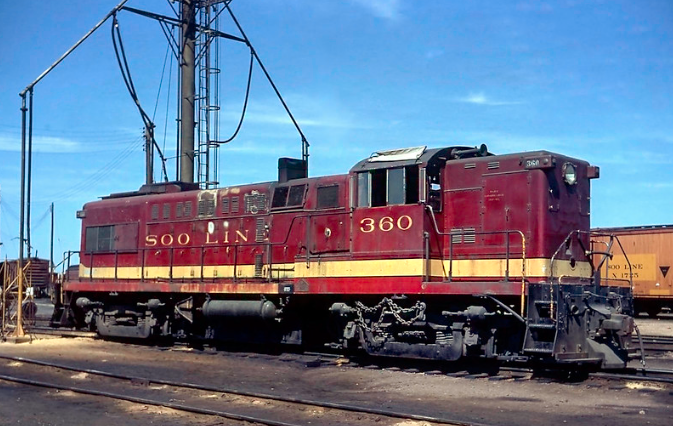
Soo Line DRS44-1500 basks in the sunshine with only four months remaining until its official
retirement. Built by Baldwin in 1947, the four-axle roadswitcher has spent 20-years in freight
service, as well as pushing ore cars up the docks to waiting lake freighters in Ashland and
Superior, Wisconsin on 28 July 1967. (Chuck Schwesinger collection)
| 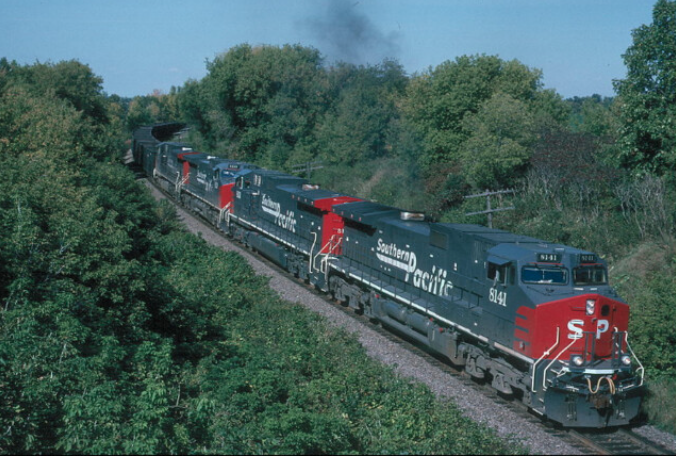
Right about now, you are wondering, "what does Southern Pacific have to do with Ore Jennies
North?" In September 1994, Chuck Schwesinger took this shot of SP's Geneva ore train in
Wisconsin and bound for Utah. The train was loaded on the DM&IR and then given to Wisconsin
Central and finally to SP. (Chuck Schwesinger photo, September 1994)
|
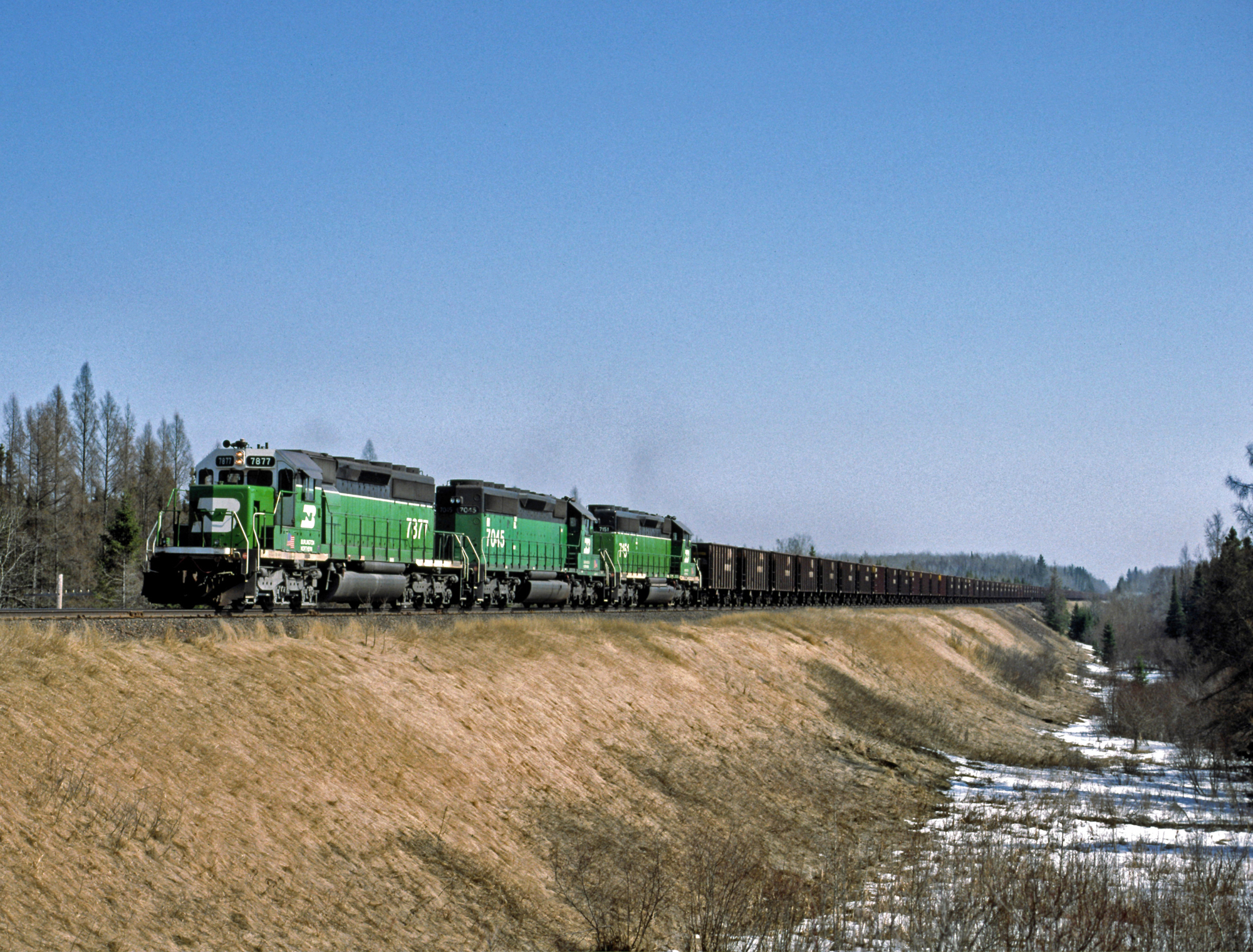
An empty Burlington Northern ore train is detouring through Sherwood, Minnesota on the DM&IR
because of a derailment on their own line on March 27, 1993. (Steve Glischinski photo and
caption info)
| 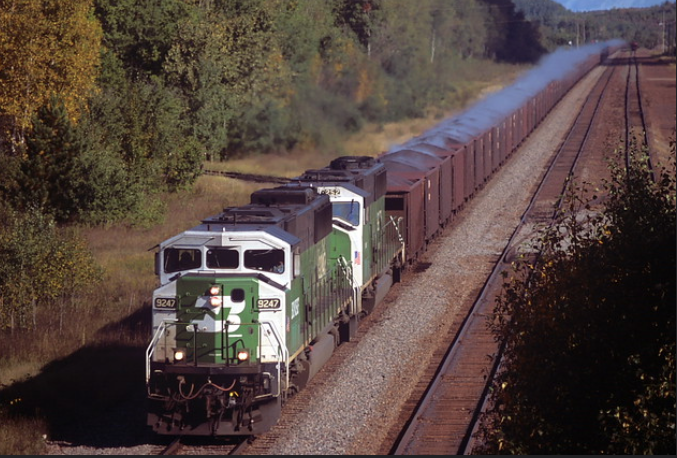
Prior to March 1970, Great Northern and Northern Pacific used these rails to reach the ore
docks at twin harbors. Tonnage on the line changed drastically when Burlington Northern
began hauling Powder River coal. (Kevin Madsen photo)
|
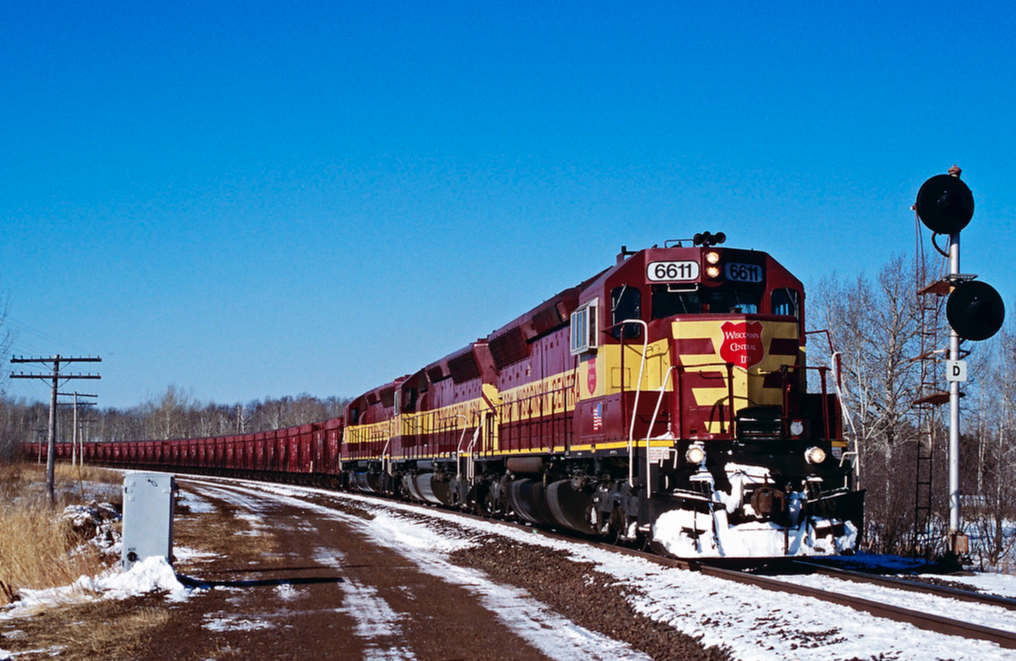
Photographer Andy Moose must have wonder about his good fortunate when he encountered this
improbable scene on 3 March 2002 in Adolph, Minnesota. Three glistening Wisconsin Central
SD45s with a long string of clean ore jennies with nothing but Kodachrome skies. WC public
relations people could not planned it better had they tried.
| 
25th Anniversary placeholder
|
|
Reference sources:
|
